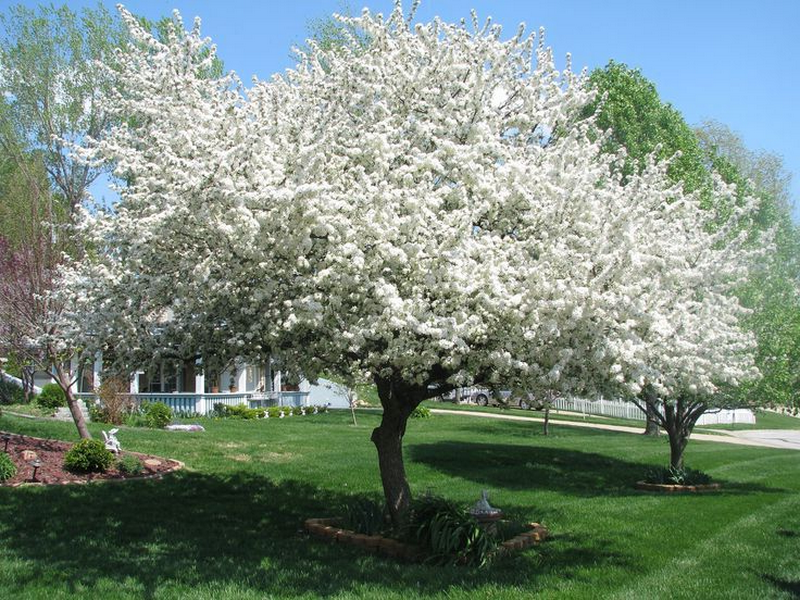American Crabapple
Malus coronaria
Click here to download a PDF of this plant information page (for printing).

Sun Exposure: Full Sun, Part Sun
Season of Interest: Spring, Summer, Fall
Bloom Time: March - April
Bloom Color: White to Pink
Height: 15 to 30 ft.
Spread: 20 to 30 ft.
Spacing: 20 ft.
Water Needs: Average
Maintenance: Very little
Soil Type: Sandy, Clay, Loam
Soil pH: Acidic, Neutral
Soil Drainage: Well drained
Pests: Leafhoppers, Treehoppers
Diseases: Cedar rust
Wildlife: Bees, Butterflies, Birds

Description:
American Crabapple is a North American native tree sought after for its highly fragrant pink flowers in spring that are the last among the Crabapples to bloom. The tree is also known as "Sweet Crabapple" for the fragrance of the flowers and fruit and the taste which tart but not bitter like the fruit from ornamental and Asian crabapples. Due to their high pectin and acid content, the ripe yellow fruits are excellent for making sweet jellies and jams. If you don't eat the small crabapples just leave them on the tree for the birds, deer and other mammals to enjoy. The leaves of this species are a bright green through the warm season turning to golden-yellow shades with the arrival of cooler temperatures in fall. For more information see:
plants.ces.ncsu.edu/plants/malus-coronaria
Care and Growing Tips:
Select a location with plenty of sun, not too close to a foundation, and a good distance away from other large trees. When planting, be sure to add plenty of organic soil amendments to give your tree roots a good start. Rich soil with good drainage is ideal, and they prefer slightly acidic soil. Crabapples do well with natural mulch which helps to keep the roots cool and moist in summer if a heatwave arrives. Once established, your crabapple tree should not need extra watering unless there is an exceptionally dry season. Excessive rainfall can harm the tree's growth cycle and fruit production.
Most crabapple trees don't need much in the way of fertilizer. A good rule of thumb is to put a small amount of compost around the tree's roots in the spring and a light application of composted manure in the late fall. Using natural mulch (wood chips or pine bark) can help keep nutrient-rich soil intact. These trees benefit from regular annual pruning. Dead branches, water sprouts, and smaller new growth can be trimmed at any time, but you may want to wait until after blossom season. If you want to prune branches larger than 1 inch in diameter, it's best to wait until late fall. Do not prune away more than about 20 percent of a tree's canopy in a single season; with a neglected tree, you should gradually prune it back into shape over the course of several years.